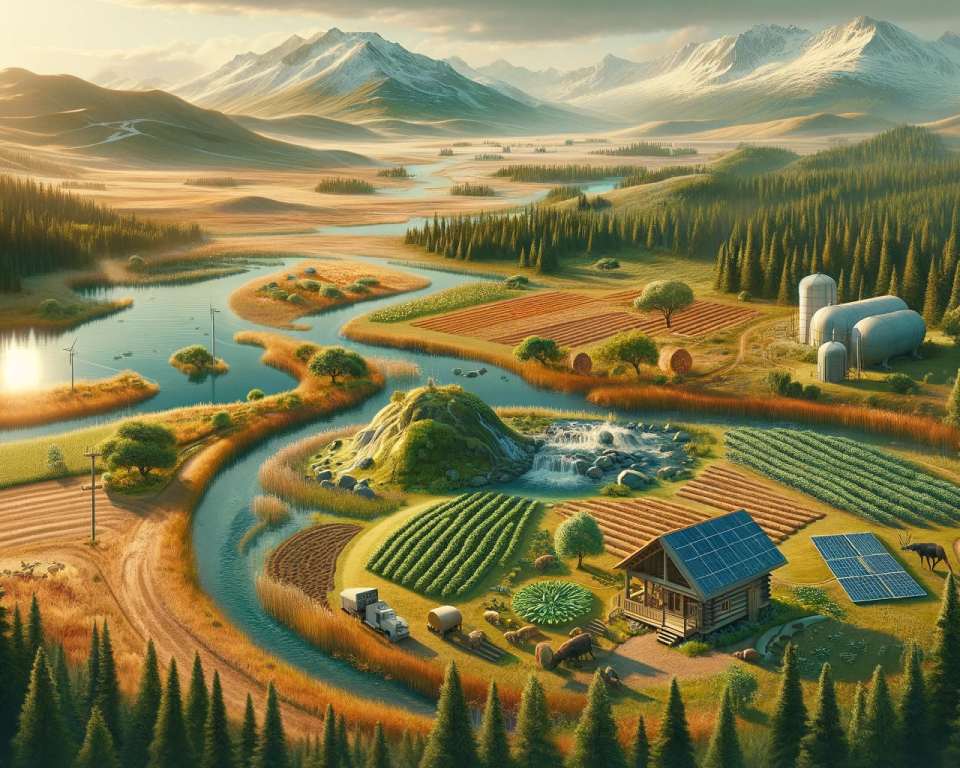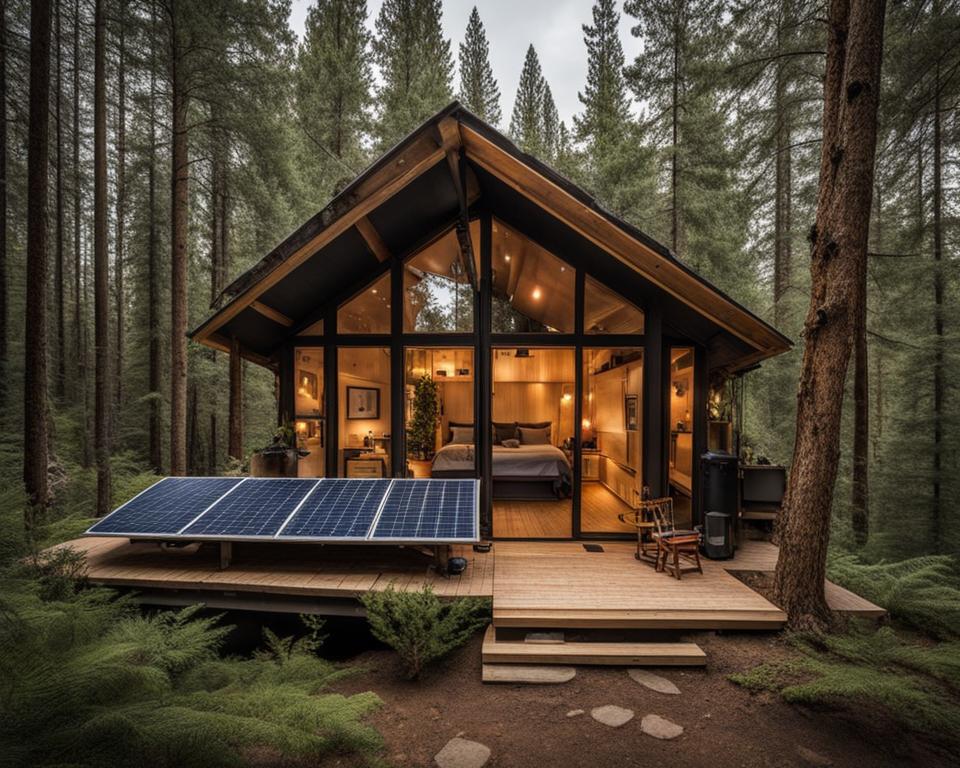Building a Survivalist’s Mindset: Essential Skills for Wilderness Preparedness
When it comes to wilderness survival, having the right mindset is just as important as having the right skills and gear. The ability to adapt, remain calm in the face of adversity, and make quick decisions can mean the difference between life and death in an emergency situation.
In this article, we will explore the essential skills and techniques necessary for wilderness preparedness. From survival skills and outdoor survival tips to wilderness navigation and first aid, we will cover a range of topics that will help you become more self-reliant in the great outdoors.
Emergency preparedness is key to staying safe in any wilderness setting. Understanding wilderness survival gear and how to use it effectively can greatly increase your chances of survival. We will also delve into the importance of bushcraft skills and how they can help you develop the mindset needed to thrive in challenging environments.
The Importance of a Positive Mindset in Survival Situations
When facing a survival situation, maintaining a positive mindset can be the key to not only enduring, but thriving amidst adversity. The field of survival psychology emphasizes the critical role of a positive outlook in developing a survival mindset and overcoming the challenges that arise in such situations.
Optimism in survival situations is not simply wishful thinking; it is a powerful mental tool that shapes our attitudes, actions, and ultimately, our outcomes. Studies have shown that individuals with a positive mindset are more likely to exhibit resilience, resourcefulness, and adaptability in the face of extreme circumstances. They are better equipped to navigate the complexities of survival and find creative solutions to problems.
“In the midst of every crisis, lies great opportunity.” – Albert Einstein
On the other hand, the effects of losing hope can be devastating. Give-up-itis, a term coined by American POWs during the Korean War, describes the phenomenon of succumbing to despair and its consequent stages, known as GUI (Give-Up-Itis).
The Stages of GUI
- Social and behavioral withdrawal: The individual starts to isolate themselves and withdraw from social interactions.
- Noticeable degree of apathy: Apathy takes hold, and they lose interest in activities and responsibilities.
- Loss of willpower and emotional responsiveness: Motivation and emotional responsiveness decline significantly.
- Stop responding to most external stimuli: The individual becomes unresponsive to their environment and disconnected from the world around them.
- Psychogenic death: In extreme cases, individuals may mentally give up, leading to psychogenic death.
These stages of GUI are defense mechanisms that the mind employs in an attempt to protect itself from the overwhelming odds encountered in survival situations. They are reflections of a loss of hope and a weakening of the will to live.
Developing and nurturing a positive mindset is essential for surviving in the face of adversity. It equips us with the mental fortitude and resilience needed to adapt to unexpected environments, make critical decisions, and maintain hope when all seems lost. A positive mindset cultivates the belief that we have the capacity to overcome challenges and emerge stronger on the other side.
Remember, in the words of Henry Ford, “Whether you think you can or you think you can’t, you’re right.” Let us cultivate a positive mindset and embrace the power it holds in helping us not only survive but thrive in even the most challenging circumstances.
Overcoming Fear for Survival Success
Fear is a natural and necessary response that helps us recognize environmental dangers and respond to them in self-preserving ways. In survival situations, our fear response can play a crucial role in keeping us safe. However, fear can also hinder our chances of survival by overriding our rational processing abilities, leaving us in a constant state of reactivity that hampers our ability to plan and process information effectively.
Controlling the fear response is just as important as cultivating optimism in a survival situation. When we experience fear, our bodies release adrenaline and other chemical messengers that trigger the fight or flight response. This physiological reaction directs the body to reduce functions that are not essential for immediate survival, which can limit our cognitive capacities.
To effectively control the fear response and prevent panic, one technique that can be useful is the STOPA technique. STOPA stands for:
Sit down: Find a safe and comfortable place to rest your body and mind.
Take a breath: Focus on your breathing and take slow, deep breaths to calm your nervous system.
Observe your emotional state: Take a moment to recognize and observe your emotions without judgment.
Plan your next move: Use clear thinking to evaluate your situation and strategize your next steps.
Act on that plan: Implement your plan confidently and efficiently to regain control and maintain focus.

This technique can help bring your mind and body back to a calmer state, allowing you to regain control over your thoughts, emotions, and actions. Panic can impair our ability to think clearly, make rational decisions, and plan effectively. Additionally, prolonged exposure to high levels of stress and fear can have detrimental effects on both our physical and mental well-being.
It’s important to remember that fear and stress are natural responses, but we have the power to control them. By understanding the fear response, practicing techniques like the STOPA technique, and maintaining a calm and focused mindset, we can increase our chances of survival and navigate challenging situations more effectively.
The Psychological Phases of Survival
In the face of a survival situation, understanding the psychological phases one may experience is crucial for long-term survival and, ultimately, recovery. These phases are characterized by adaptive goal-directed behavior and the delicate balance between the “won’t-to-live” and “will-to-live” mental processes.
Survival psychologists have identified five distinct phases that individuals may go through during a survival scenario: the pre-impact phase, impact phase, recovery phase, rescue phase, and post-trauma phase.
In the pre-impact phase, individuals are in their normal adapted environment, unaware of the impending challenge. They may have a false sense of security and minimal awareness of potential threats.
The impact phase occurs when individuals are suddenly forced outside of their adapted environment. This displacement requires rapid adjustment and learning of new behaviors to adapt to the unfamiliar and challenging conditions. The psychological and emotional toll of this phase can be overwhelming, with fear and uncertainty dominating one’s thoughts.
During the recovery phase, which spans the first three days of a survival situation, cognitive abilities may be reduced or even paralyzed. Successful adaptation during this critical period is essential to avoid falling into the depths of psychogenic death. It is during this phase that the battle between the “won’t-to-live” and “will-to-live” mental processes is fought.
Psychologists emphasize the importance of maintaining hope and staying active to keep the “won’t-to-live” mental processes at bay. Engaging in adaptive, goal-directed behavior and finding meaning in one’s actions can significantly contribute to an individual’s will to survive.
As the initial shock and disorientation subside, mental processes gradually return to a more normal state. This marks the beginning of the rescue phase, where individuals may strategize their escape, attract attention, or seek rescue through various means. During this phase, short-term survival needs take precedence.
Finally, the post-trauma phase comes into play when individuals are out of immediate danger and have been rescued or have successfully reached safety. This phase focuses on emotional and psychological recovery, as individuals process their traumatic experiences and begin rebuilding their lives.
Surviving and thriving in a challenging environment goes beyond physical strength and resourcefulness. Understanding the psychological phases of survival is key to fostering adaptive goal-directed behavior and maintaining the will to live.
Developing Adaptive Goal-Directed Behavior
During the recovery phase and beyond, developing adaptive goal-directed behavior is crucial for long-term survival. This requires prioritizing short-term survival needs, such as finding water, shelter, and food, while also planning for the future when mental functions return to a more normal state.
Here are some strategies to develop adaptive goal-directed behavior:
- Stay focused on immediate needs and take practical steps to meet them.
- Stay informed about the environment and its resources to make informed survival decisions.
- Adapt to changing circumstances and be open to alternative strategies.
- Seek opportunities for learning and skill development to enhance survival abilities.
- Practice mental and emotional resilience to overcome challenges and setbacks.
“In the recovery phase, it is our adaptive goal-directed behavior that propels us forward, enabling us to transcend the immediate challenges and focus on long-term survival.”

By developing adaptive goal-directed behavior, individuals can maximize their chances of long-term survival and successfully navigate the psychological phases of a survival situation.
The Essential Skills for Wilderness Survival
To become a successful survivalist, we must acquire a diverse range of skills. These skills include navigation, fire-making, shelter building, water sourcing, foraging and hunting, first aid, and self-defense.
Navigation Skills
When venturing into unfamiliar territory, navigation skills are crucial. We must learn how to read maps, use compasses, and navigate using natural landmarks. These skills provide a sense of direction and prevent getting lost in the wilderness.
Fire-Making Techniques
Mastering fire-making techniques is essential for wilderness survival. Fire provides warmth, light, and the ability to cook food. We should learn various methods, such as using fire starters, friction-based methods like bow drill or hand drill, and utilizing natural resources like flint and steel.
Shelter Building
Building a shelter is vital to protect ourselves from harsh weather conditions. We should learn how to construct different types of shelters using natural materials like branches, leaves, and rocks. Understanding shelter placement and insulation techniques will ensure our comfort and safety.
Water Sourcing
Obtaining safe drinking water is essential for survival. We should learn how to source and purify water in the wilderness. Techniques like finding natural water sources, building water filters, and using purification tablets or boiling water will help us stay hydrated and prevent waterborne illnesses.
Foraging and Hunting
Acquiring the skills to find edible plants, berries, and mushrooms in the wild is crucial for sustained nourishment. We should also learn basic hunting techniques like trapping and fishing to supplement our food supply. Understanding local flora and fauna is vital to avoid poisonous or dangerous species.
First Aid Skills
Basic first aid knowledge is essential in the wilderness. We should learn how to dress wounds, treat injuries, and manage common illnesses. Carrying a well-stocked first aid kit and knowing how to administer CPR and basic life-saving techniques can make a significant difference in emergency situations.
Self-Defense
Being able to protect ourselves is crucial in the wilderness. Learning self-defense techniques and carrying necessary tools like knives or personal alarms can help deter threats and ensure personal safety. It is important to be aware of our surroundings and avoid confrontations whenever possible.
By mastering these essential wilderness survival skills, we can navigate through unknown terrain, stay warm and protected, find food and water, provide basic medical care, and defend ourselves if necessary. These skills empower us to overcome challenges and thrive in the wild.

Embracing a Self-Sufficient Lifestyle in the Wilderness
Becoming a survivalist goes beyond acquiring essential skills; it’s about embracing a self-sufficient lifestyle in the wilderness. Key aspects of living off the grid include sustainable food sources, renewable energy, water conservation, and waste management.
- Sustainable food sources: Achieve self-reliance in food by implementing various practices such as gardening, raising livestock, and utilizing preserving techniques for long-term sustenance.
- Renewable energy: Reduce dependence on the power grid by harnessing solar panels and wind turbines to generate sustainable energy in the wilderness.
- Water conservation: Ensure efficient usage of water through methods like rainwater harvesting and graywater recycling to minimize waste.
- Waste management: Minimize waste production and implement eco-friendly practices for waste management to maintain a sustainable lifestyle.
To illustrate the importance of sustainable living, we can look at the case of sustainable food sources. By practicing gardening, raising livestock, and preserving techniques, we can ensure an ongoing supply of fresh and nutritious food. This not only reduces our reliance on external sources but also promotes a healthier and more self-sufficient lifestyle.
“Living off the land and embracing a self-sufficient lifestyle allows us to reconnect with our natural surroundings and reduce our ecological footprint.”
Additionally, utilizing renewable energy sources like solar panels and wind turbines not only provides us with a reliable power supply but also helps reduce our impact on the environment. By tapping into these sustainable energy sources, we can enjoy the benefits of modern conveniences while minimizing our carbon footprint.
Choosing the Right Location for Off-Grid Living
When embracing the wilderness and living off the grid, selecting the right location is crucial. We need to consider various factors to ensure our off-grid homestead provides the necessary resources for self-sufficiency.
Access to Natural Resources
Look for an area with abundant natural resources such as water, fertile soil, and wildlife. Having access to these resources is essential for sustaining ourselves in the wilderness.
Consider Climate and Terrain
Take into account the climate and terrain of the chosen location. Understanding the local weather patterns, temperature extremes, and seasons will help us prepare appropriately and make informed decisions when it comes to building our sustainable shelter.
Proximity to Essential Services
Although the goal of off-grid living is self-sufficiency, it’s important to consider our proximity to essential services. Being within a reasonable distance to medical facilities, markets, and other necessary amenities can provide an added layer of security and convenience.

By selecting a location with access to natural resources, considering the climate and terrain, and ensuring proximity to essential services, we can establish a successful off-grid lifestyle. Now let’s move on to the next section to explore the process of building a sustainable shelter in the wilderness.
Building a Sustainable Shelter in the Wilderness
When it comes to survival in the wilderness, having a well-built and sustainable shelter is of utmost importance. Not only does it provide protection against harsh weather conditions, but it also offers comfort and security in an unpredictable environment.
Creating a sustainable shelter involves using eco-friendly materials that have minimal impact on the environment. Consider options such as straw bales, cob, or reclaimed wood for your shelter construction. These materials are not only readily available but also help reduce waste and damage to natural resources.
Building with straw bales: Straw bales are an excellent choice for sustainable shelter construction. They are an abundant and renewable resource and offer excellent insulation properties. By using straw bales, you can minimize your ecological footprint while maximizing energy efficiency.
Embracing cob construction: Cob, a mixture of clay, sand, and straw, is another eco-friendly option that allows for creative and sustainable shelter design. It is a low-cost and versatile material that provides excellent thermal mass, keeping the interior cool during hot days and warm during chilly nights.
Utilizing reclaimed wood: Incorporating reclaimed wood into your shelter not only adds a rustic charm but also reduces deforestation and the demand for new timber. Reclaimed wood can be sourced from old barns, fences, or other structures, giving new life to materials that would otherwise go to waste.
Maximizing energy efficiency with passive design principles: In addition to using eco-friendly materials, incorporating passive design principles into your shelter can further optimize its sustainability. Passive design focuses on utilizing natural elements, such as sunlight and airflow, to regulate temperature and lighting without the need for artificial heating or cooling. This reduces energy consumption and reliance on non-renewable resources.
Harnessing the power of nature: Consider the placement of windows to capture natural light and warmth during the day. Design your shelter’s orientation to take advantage of prevailing winds for natural ventilation. These passive design strategies not only enhance sustainability but also contribute to a more comfortable and harmonious living space.
“Building a sustainable shelter in the wilderness is not just about survival. It’s about coexisting with and respecting the natural environment, while ensuring our own comfort and safety.”
A well-built sustainable shelter provides not only a physical refuge but also a sense of connection to nature. By using eco-friendly materials and incorporating passive design principles, we can create shelters that not only meet our basic survival needs but also promote a more sustainable and harmonious way of living in the wilderness.
Harnessing Alternative Energy Sources for Off-Grid Living
Off-grid living requires finding alternative ways to meet energy needs. In remote wilderness settings, traditional power sources may not be readily available or sustainable in the long run. That’s where alternative energy sources come into play, providing a reliable and eco-friendly solution for off-grid energy generation.
When it comes to alternative energy sources, three options stand out: solar power, wind turbines, and hydroelectric power systems. These renewable energy sources harness the power of nature to generate electricity, reducing reliance on fossil fuels and minimizing environmental impact.
Solar power: The sun is an abundant source of energy, and harnessing it through solar panels is a popular choice for off-grid living. These panels convert sunlight into electricity through photovoltaic cells, providing a clean and sustainable energy source. By investing in high-quality solar panels and batteries, off-grid enthusiasts can have a consistent power supply even in remote locations.
Wind turbines: Wind energy is another excellent option for off-grid power generation. Wind turbines convert the kinetic energy of the wind into electrical energy. Depending on the wind resources in the area, a well-designed wind turbine system can provide a significant amount of electricity. It is important to consider factors like wind speed, direction, and the height of the tower when installing wind turbines to maximize energy production.
Hydroelectric power systems: For off-grid living near water sources, harnessing hydroelectric power can be highly effective. Small-scale hydroelectric systems utilize flowing or falling water to generate electricity. By utilizing the power of streams, rivers, or even small waterfalls, off-grid enthusiasts can generate reliable and continuous energy. Nonetheless, it’s essential to assess the local water resources carefully to determine if hydroelectric power is a viable option.
By investing in alternative energy sources like solar power, wind turbines, or hydroelectric power systems, off-grid enthusiasts can enjoy the benefits of a sustainable and reliable energy supply while reducing their environmental footprint.

“By investing in alternative energy sources, we can power our homes and enjoy modern comforts while minimizing our environmental impact.”
Growing Your Own Food in the Wilderness
When it comes to off-grid living, one of the most essential skills is the ability to grow your own food. By establishing a sustainable garden using permaculture principles, we can ensure a self-reliant and sustainable food supply.
Gardening in the wilderness requires careful planning and implementation of permaculture principles. Crop rotation, companion planting, and organic pest control methods are key strategies to maximize yield and minimize environmental impact. These practices not only promote biodiversity but also enhance soil fertility, making our garden resilient and productive.
In addition to adopting permaculture principles, it is crucial to implement water harvesting techniques to sustain our garden. Collecting and storing rainwater allows us to conserve this precious resource, especially in arid environments. By utilizing techniques such as swales and rain barrels, we can effectively manage water availability, ensuring the health and productivity of our garden.
Furthermore, preserving our harvest is vital for long-term food security. Learning food preservation techniques like canning and drying enables us to store the abundance of our harvest and extend its shelf-life. By properly preserving the fruits of our labor, we can enjoy homegrown produce throughout the year, even during periods when fresh produce may be scarce.
FAQ
What are wilderness preparedness skills?
Wilderness preparedness skills are a set of abilities and knowledge that allow individuals to survive and thrive in outdoor environments. These skills include navigation, fire-making, shelter building, water sourcing, foraging and hunting, first aid, and self-defense.
Why is a positive mindset important in survival situations?
A positive mindset is crucial in survival situations as it helps individuals develop the adaptability, patience, and brainpower needed to overcome adversity. It also prevents the detrimental effects of losing hope, which can lead to psychogenic death.
How can fear hinder survival in wilderness situations?
Fear can hinder survival by overriding rational processing abilities and leaving individuals in a constant state of reaction, making it difficult to plan and process information effectively. Controlling the fear response is essential in maintaining cognitive capacities during high-stress situations.
What are the psychological phases of survival?
The psychological phases of survival include the pre-impact phase, impact phase, recovery phase, rescue phase, and post-trauma phase. These phases describe the mental and emotional processes individuals go through during a survival situation.
What skills are essential for wilderness survival?
Essential skills for wilderness survival include navigation skills, fire-making techniques, shelter building, water sourcing, foraging and hunting, first aid skills, and self-defense.
How can I embrace a self-sufficient lifestyle in the wilderness?
Embracing a self-sufficient lifestyle in the wilderness involves sustainable food sources, renewable energy, water conservation, and waste management. This includes practices such as gardening, raising livestock, using renewable energy sources, water harvesting, and implementing eco-friendly waste management practices.
What factors should I consider when choosing an off-grid location?
When choosing an off-grid location, it is important to consider factors such as access to natural resources, climate, terrain, and proximity to essential services. These factors will contribute to your ability to live self-sufficiently in the wilderness.
How can I build a sustainable shelter in the wilderness?
Building a sustainable shelter in the wilderness involves using eco-friendly materials such as straw bales, cob, or reclaimed wood. Incorporating passive design principles and ensuring protection against harsh weather conditions are also important.
What alternative energy sources can be harnessed for off-grid living?
Alternative energy sources for off-grid living include solar power, wind turbines, and hydroelectric power systems. These sources provide renewable energy and reduce dependence on the power grid.
How can I grow my own food in the wilderness?
Growing your own food in the wilderness can be achieved through practices such as gardening, using permaculture principles, implementing water harvesting methods, and learning food preservation techniques. These methods ensure a sustainable food supply in the wilderness.





